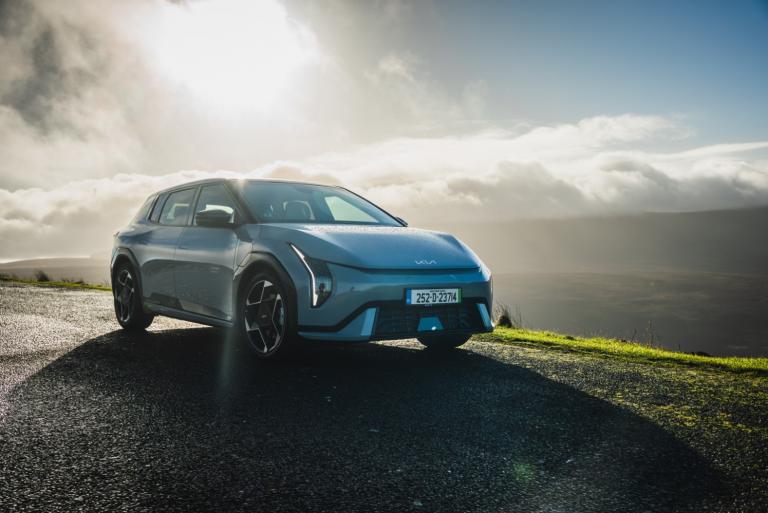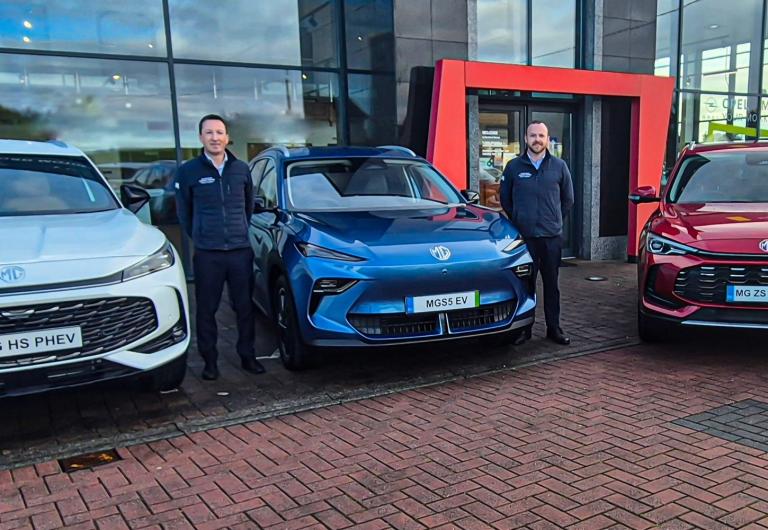Skoda Karoq compact SUV
Published on 31 January, 2018
Prices start at €27,715 (Ambition spec).
Overview
When all is said and done, when the price has been chewed over, spec levels detailed, connectivity explored, the size of boot trumpeted, engines (petrol, diesel) praised, market share cherished, the fact of the matter is Skoda has done something more with their new compact SUV five-seater Karoq (from €27,715).
Call it a shift upmarket, call it putting in quality 'stuff', call it what you like, but there is a detectable sense from the Karoq, as there was/is from the larger (mostly seven-seater) Kodiak, that they've climbed the pecking order in the Volkswagen Group and are getting really decent material to work with.
Kodiak demand vastly outstripped supply. That made quite a number of people angry but I'm told the situation has improved a lot.
Those chasing a Karoq are unlikely to have that problem with provision made for the five-door successor to the inimitable Yeti to rack up around 1,300 buyers this year. That's well behind segment leader Hyundai's Tucson but a strong start for a newcomer nonetheless.
I await a lengthier series of drives (and not all materials in the cabins were of dash-level quality) but the evidence of first acquaintance here is promising.
Diesel remains a favourite in this sector (there's a 1.6 and 2-litre in the Karoq) but I took a couple of petrols for test - a 1.5-litre 150bhp and a lively 115bhp 1-litre (all engines, petrol, diesel are turbo-powered) because I think a lot of people doing sub-15,000km a year should go for them. Both test cars incur €270 road tax.
The 1.5-litre with its cylinder technology had plenty of power but the 1-litre surprised with its energy. Forget about it being a 1-litre, it was well up to the task.
Some facts: The Karoq is 160mm longer, 48mm wider and has a 60mm bigger wheelbase than the Yeti; 40mm more room at front, 14mm at back and a 105mm bigger boot (claimed class leader at 521 litres).
With Varioflex seating (optional) there are myriad combinations to extend that luggage room. There are 2WD and 4WD versions too.
I liked the dash and instrumentation: a sign of the quality look and feel I spoke about. It's a smart cabin all round and there's an excellent driving position.
They have clever touches (umbrella under the passenger seat) and several cubbyholes.
There's a lot of connectivity/infotainment (one helpful piece tells you the petrol/diesel price at the next fuel station). There are Columbus and Amundsen navigation systems and a hotspot for on-board wi-fi. You can also add a wireless phone charger.
Prices start at €27,715 (Ambition spec). The other trim, Style, costs upwards of €2,600 extra (60pc of buyers expected to go for this; 25pc will opt for automatic DSG transmission).
They say that while customer loyalty is high, they are additionally attracting a different sort of buyer. Across the brand, 55pc of their customers availed of VW Bank finance last year and, of those, 70pc went for PCPs.
Some more facts: Standard spec includes 17ins alloys, 8ins touch screen Bolero infotainment system, Climatronic air-con, rear parking sensors, Smart Link+ etc.
Style trim adds 18ins alloys, 9.2ins Columbus infotainment system (sat nav, rear view camera, DAB radio etc).
And the Style level of spec has the full suite of the brand's Connectivity pack (Infotainment Online, Care Connect, Emergency Call).
Will the new Karoq push the brand into the top five position they covet here? Too soon to say but it will certainly help. Rivals have powerful line-ups too, don't forget. But the addition of hybrids (Superb, 2019) and two electric cars (2020) suggest there's a lot of momentum still to come.
Latest Reviews

Kia EV4 Video Review

CarsIreland Dealership Awards 2025: Celebrating Excellence Across Ireland

Rochford Motors Joins MG Network as New West of Ireland Dealer